Flat slate or asbestos-cement sheets are, in fact, the same. They do not let water and air. The material is used for exterior and internal works, facing wall facades. Inside the structure, it is used as partitions. But the most optimal and traditional solution is an application as a roof coating.
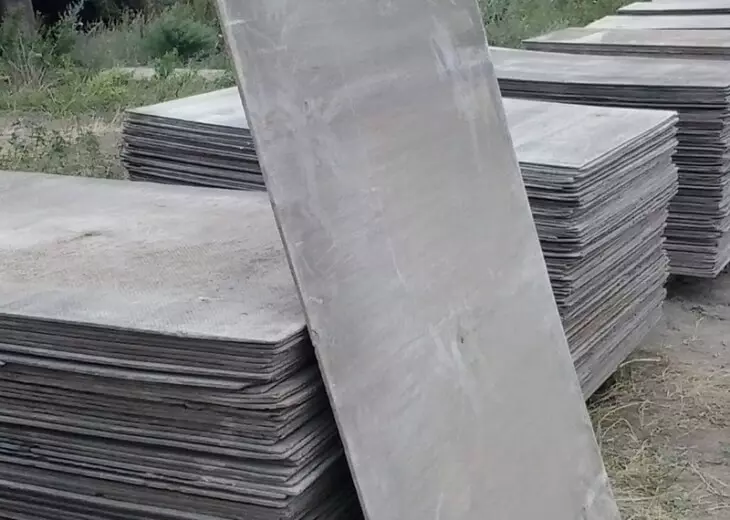
Flat slate - universal material used for various construction and economic needs
Properties and characteristics of flat slate
The main material for the manufacture of a flat slate is Portland cement and a thin-fiber asbestos. The weight of the product directly depends on the thickness of the sheet, length and width.
The widespread use of the material is due to high operational qualities. Due to the bulk dimensions and light weight, it is used to build various structures and structures. In addition, slate sheets found their use during the construction of ventilation mines, facade of buildings, jumpers and partitions.
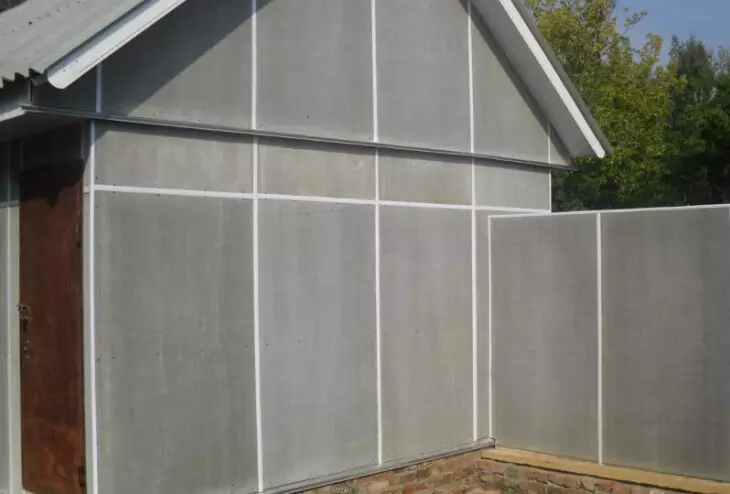
Application of asbestos-cement flat sheets for facing structures
Varieties of product
Flat slate has dimensions in accordance with state standards: length - 3.6, 3, 2.5 meters, and width - 1.5, 1.2 meters.
Flat slate is divided into extruded and not pressed.
- A pressed flat slate has a strength of 23 MPa, and not a pressed - 18 MPa.
- The density of the pressed slate reaches 1.8 g per cm3, and not pressed is 1.6 g per cm3.
- The extruded has a shock viscosity of 2.5 kJ per m2, and not pressed - 2 kJ per m2.
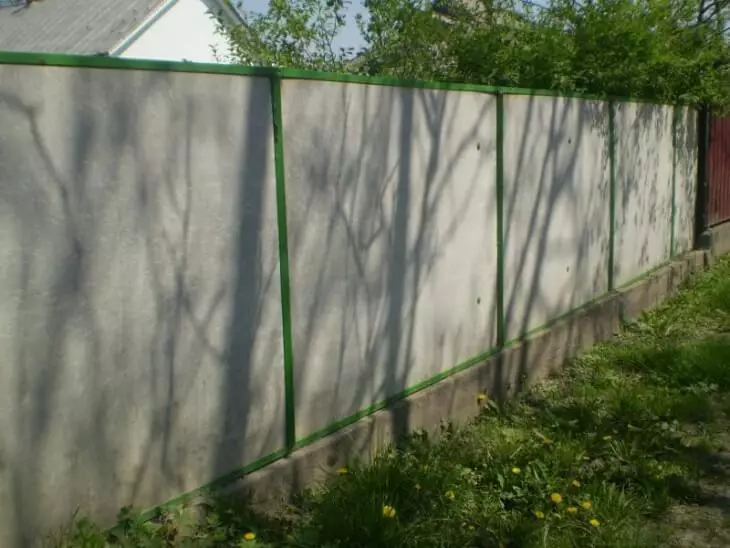
Flat slate sheets are often used for the construction of fences.
Advantages and disadvantages
From the key advantages of the material it is worth highlighting:
- Available price is due to the fact that the flat slate is produced from an inexpensive material, the price is due to the price.
- High strength and reliability during operation.
- Under the influence of high temperature, the material is not lit, only "shoots" if it falls under the effect of open fire.
- The ability to extinguish noise. During the rain in the house, it is not heard as drops on the roof.
- Resistant to corrosion actions.
- It is possible to cut with a hacksaw.
- The sun rays are practically not attracted, has a low temperature deformation coefficient. Thanks to these properties, the service life increases.
Article on the topic: How to make a coffee table from birch lanes with your own hands: Master class with instructions and photos
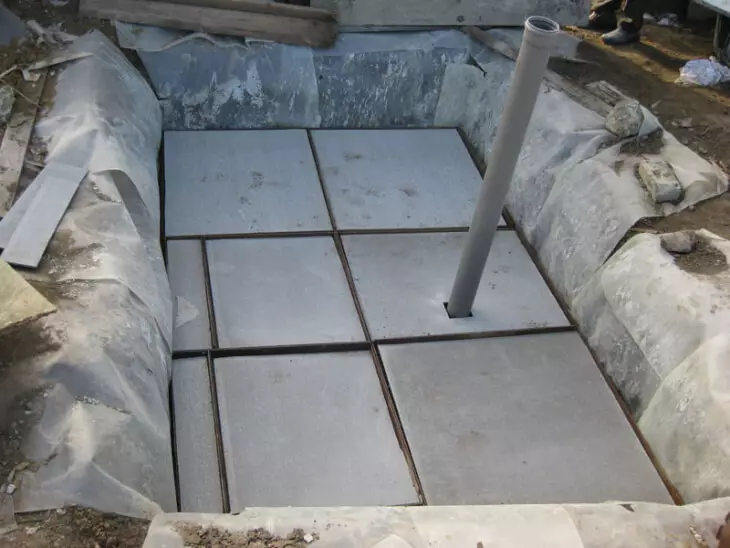
Using a flat slate as a formwork for subsequent concreting cap septic
The shortcomings are not so much, but the following are allocated:
- Asbestos dust, which is formed during cutting, adversely affects human health, so during operation you need to protect the respiratory tract.
- The hydrostility is not at the best level, which leads to the growth of MCH. The formation of moss can be easily eliminated by pre-processing the material with a special solution.
Installation
Flat slate can be installed almost on any surface.
- Scroll during installation you need to use reinforced, as the flat slate has a decent weight. Set rafters is recommended through each meter.
- Sheets laid with a little displacement to eliminate the formation of the seam. Long seams are poorly contained water, so such a fact should be taken into account during the installation process.
Important! The top row is overwhelmed to the lower, half of the length, and the longitudinal row is stacked into the joint.
- Take care of the good roof waterproofing. Be sure to use the hydrobrier.
- As an attachment, it is necessary to use a screw with a washer on a tree, as well as a rubber gasket. The direct material should not be attached to nails - it can disrupt the integrity.
- A hole for samboors is done using a drill with a carbide attack. Make an indent from the edge of 60-70 cm, as if drove closer to the edge, you can damage slate.
- You can buy slate and paint it into any color for further use as roofing material. The direct material is the best solution for your roof.
Do not forget that self-tapping screws are used as fixes, not nails.
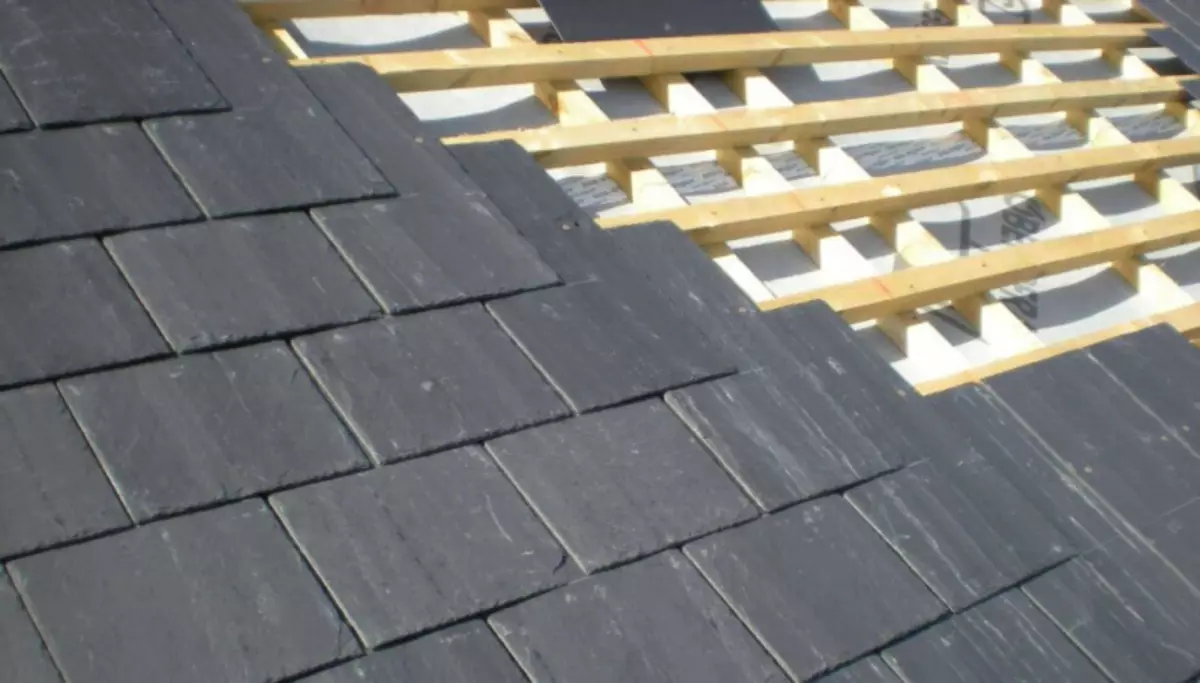
Flat Slate Roof Coating Technology
What you need to know
Methods of fastening material, species, length, thickness - the main factors that affect the choice. Flat slate thickness varies from 6 to 10 mm, length from 1.5 to 3.6 meters, weight from 39 to 115 kg. The possibilities of deviation in size do not exceed 5 mm. When choosing, you must pay attention to the values. For example, 3.6x1.5х8 - which means a leaf of a length of 3.6 meters, width 1.5 meters, 8 mm thickness. NP marking means - recreated sheet, and n - pressed. Flat sheet is denoted as LP.
Article on the topic: Granite slabs: Types and properties of material for finishing walls and floors
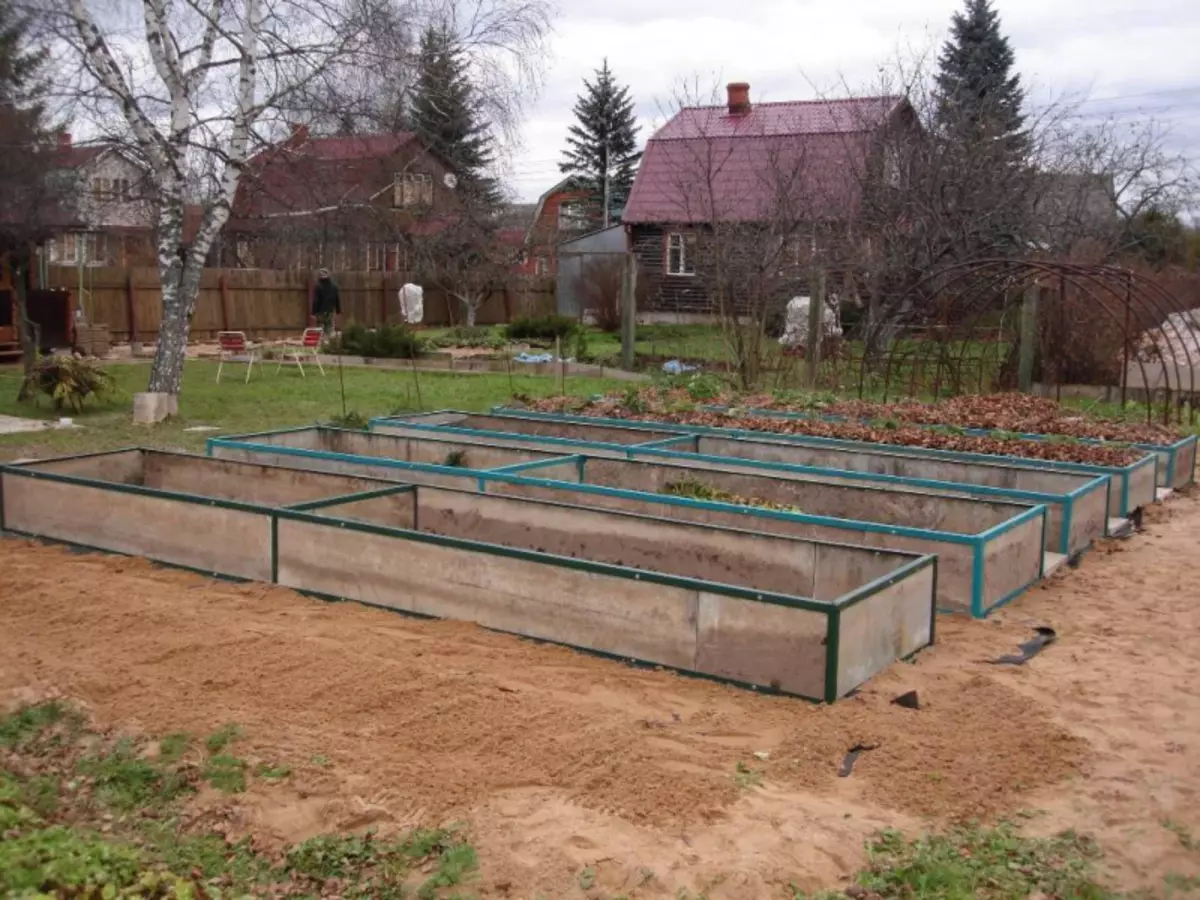
Device warm beds from sheets of flat slate
Plumber of foundation
Flat slate is actively used to cover the foundation.
During the installation process, it is not necessary to use nails, as you can damage the integrity of the structure. It is best to take advantage of the klymmer to secure the flat slate.
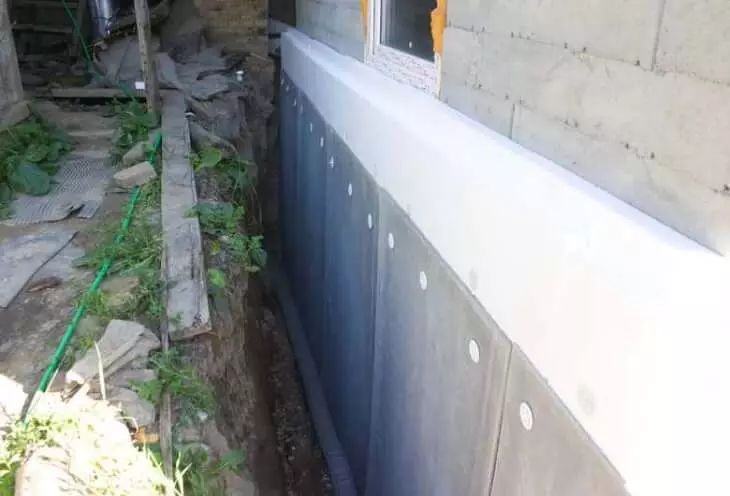
Flat slate for protecting the thermal insulation layer of the foundation
The process of the sheath is divided into the following steps:
- The surface of the base is purified from dirt and dust, dried, necessarily treated with a water-repellent mixture, for example, "technomast".
- Installation of a wooden frame that is made from a bar or boards. Stands of the crates should be placed at the same distance as Schifer himself.
- Between the racks, the insulation should be put for better thermal insulation. You can apply mineral wool as a material.
- Starting the installation of a flat slate is needed from the corner of the building. Ventilation holes should be cut in advance. Sheets are fixed with screws to the crate. With the help of mounting layouts, caps are closed.
- Proceed the corners. For this, four blanks are made of galvanized iron. Vertical edges should be beaten by 15 mm, and then fold in the middle. Be sure to be fold at right angles. Fixing the corners is made using self-tapping screws. To not split the sheet, first make the hole, and then fix the screw.
- At the final stage, the flat slate is painted with acrylic paint.
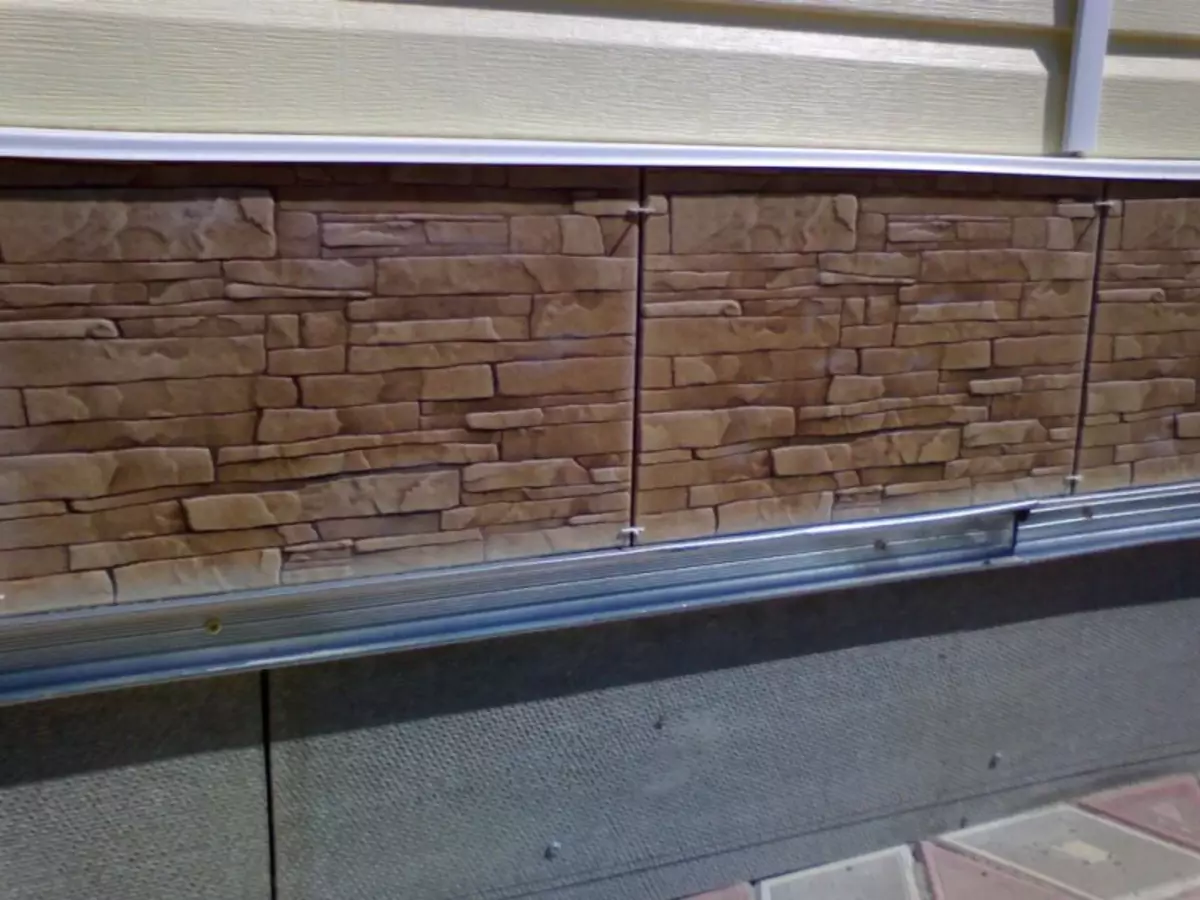
Facing the base of the building asbacked sheets
